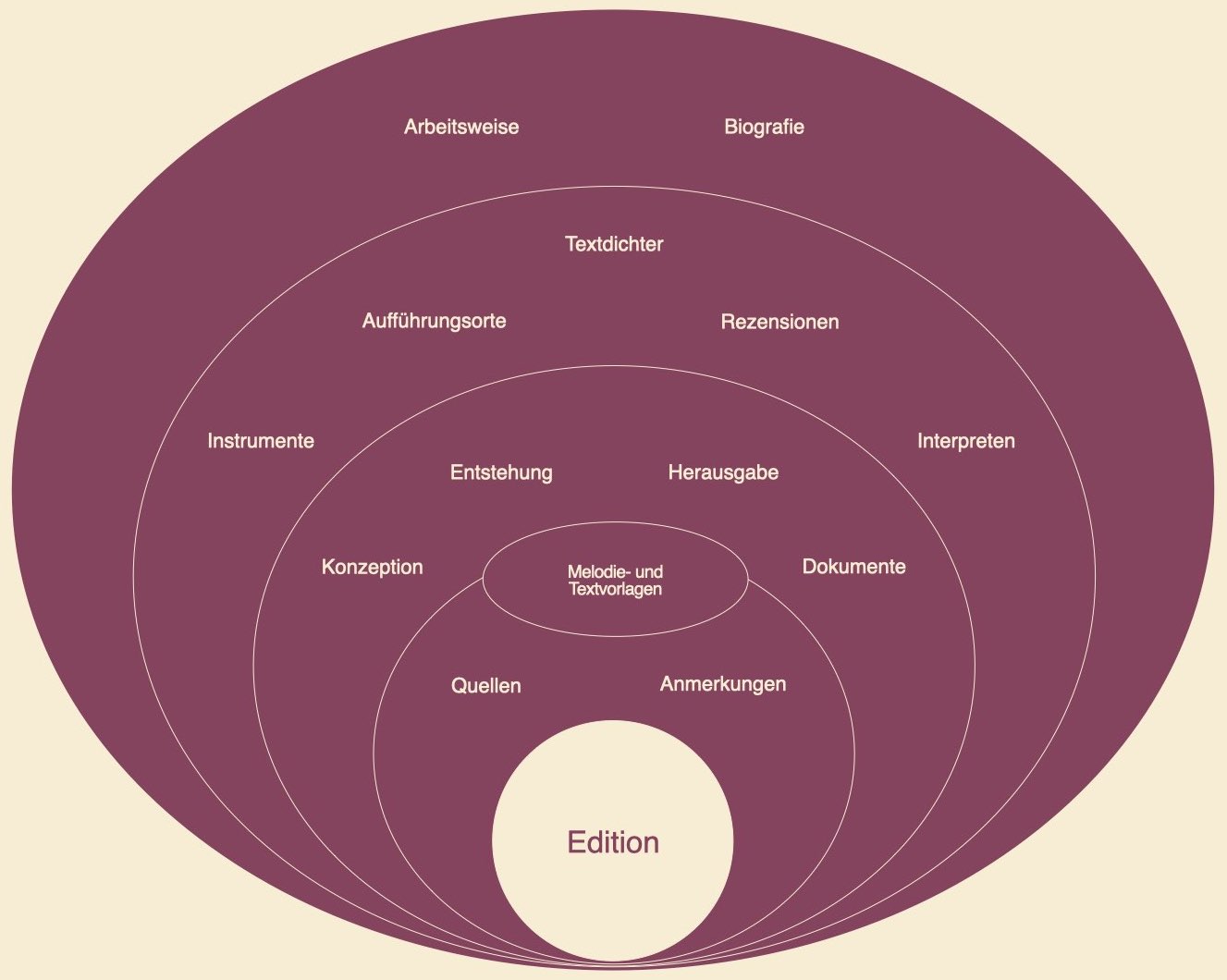9th June 2023, RWA Online updated!
Start of RWA Encyclopedia
First sections of the RWA Encyclopedia on persons/institutions, postal items and work templates are now available.
The new online version of the RWA Encyclopedia has been launched in the Reger Year 2023. From now on, all components of the hybrid RWA edition publications (printed and digital editions as well as encyclopedia) are accessible again. After a rebuilding phase lasting several years, the RWA Encyclopedia appears in a new design, with updated technical underpinnings, consolidated content structure and a functional user interface. The information on the artistic, historical and social environment of Max Reger's edited works, which until 2019 (Volume II/8) had only been included in the respective edition volumes on DVD, will be brought together here in a central location, updated and continuously extended in accordance with the edition's publication plan.
1. Contents

The RWA Encyclopedia explores the respective context of the edited Reger works. Starting from the individual editions and their critical reports, for the user a multi-layered and, in the field of scholarly-critical music editions, so far unique, processed cosmos of knowledge unfolds. It evolves similar to a “bulb structure” from detailed analyses of the genesis of the edited works and their contemporary reception, to contextualising descriptions of performance venues, lyricists and text templates, etc., to reflections on Reger's entire oeuvre, e.g. his working methods, his artistic environment and a biographical classification of his oeuvre and life.
2. New technical underpinning and consolidated content structure
Until 2019 (publication of the last edition volume with included DVD), the RWA Encyclopedia consisted largely of manually linked individual articles, the scope and number of which had grown enormously over the course of the project. This, the direct integration into Edirom-Online and the restrictions that arose due to the volume-by-volume publication made a continuous functional and content-related expansion as well as a timely mirroring of the information back into the research databases of the Max-Reger-Institute (MRI) visibly more time-consuming.
With the ongoing transformation of the MRI's research dataset since 2016 away from proprietary to open formats such as TEI and MEI and their (public) use in the Max-Reger-Portal (MRP), the basis for direct, seamless linking, re-use and enrichment of the MRI data holdings was given for both the editorial and the encyclopedic part of the RWA publications. RWA Online and the content it contains are now directly and bidirectionally linked to the MRP. The user thus always has access to the latest publication and research data at a centralised information hub.
The content structure of the encyclopedia has also been fundamentally revised. A clear distinction is now made between descriptions of objects (works, sources, postal items, persons etc.), biographical observations and the inter-edition, inter-work and inter-module treatment of editorial or scholarly questions in essays (in preparation). For the user, this will result in a more stringent connection between the digital critical report and the encyclopedia.
3. New user interface
The new online version of the RWA Encyclopedia integrates seamlessly into RWA Online and is no longer integrated into Edirom or Edirom Online as an integrated content window. The encyclopedia thus receives equal access to the editorial part of RWA Online, which allows users to inform themselves about the context of the works edited in RWA even outside of a specific edition context. The RWA Encylopedia's entry is divided into four main sections:
- Module-specific work overviews
- Biographical context
- Object descriptions
- Essays (in preparation)
For each of the work and object overviews, the user is provided with a catalogue-like entry page, which can be used to filter the overviobjects according to (editorially) relevant aspects. For example, work descriptions can be filtered according to their respective RWA volume affiliation or person descriptions according to references to Reger such as "lyricist" or "correspondent". Rudimentary search functions for names of persons or work titles have also already been implemented and will be expanded into full-featured search functions in the future.
The work and object descriptions are linked to each other and to the editorial content in a variety of ways, so that the user is able to move seamlessly through the RWA's entire content collection.